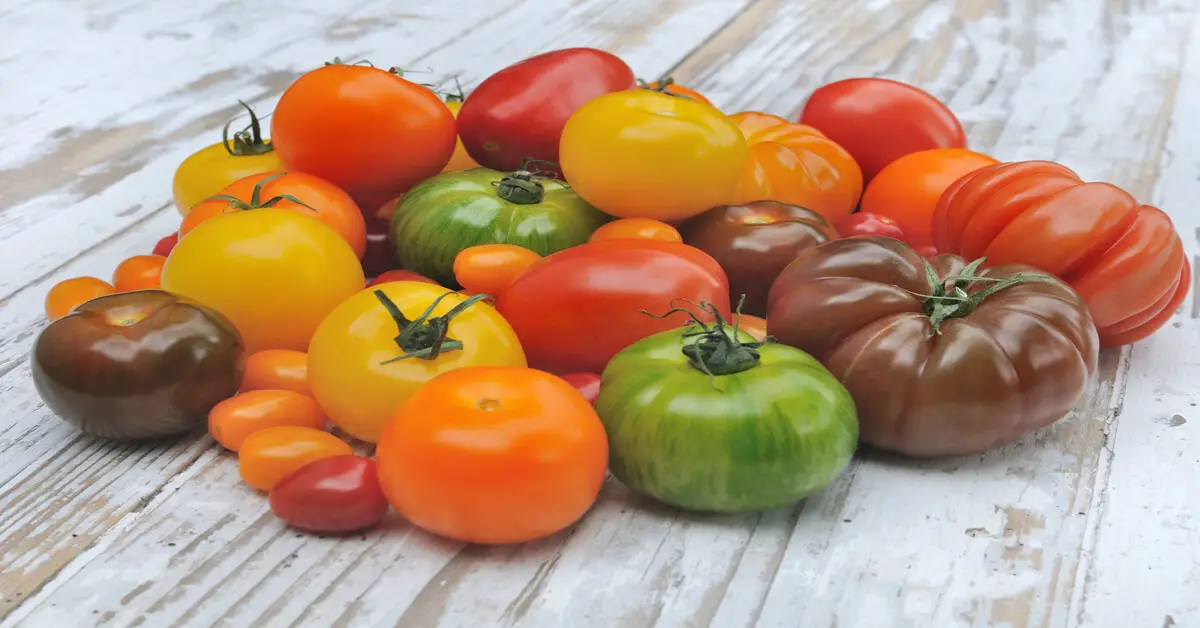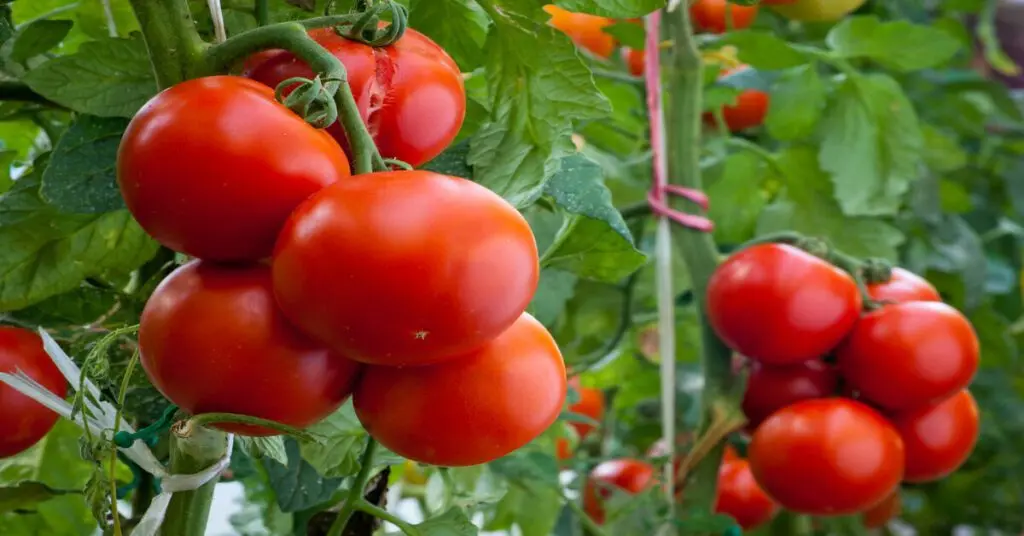It’s impossible to imagine a world without tomatoes (Solanum lycopersicum) today. And yet a few centuries ago tomatoes were considered ornamental and suspicious.
Is the tomato man-made? The modern tomato, as we know it, is man-made. Probably came from the domestication of the blueberry-sized wild tomato. Or currant tomato (Solanum pimpinellifolium) some 7,000 years ago in Peru.
The scientific name of the modern tomato is sometimes referred to as Lycopersicum esculentum. Which would place tomatoes in their own genus.
However, genetic analysis done in the 1990s re-categorized tomatoes. Under the nightshade family (Solanaceae). Which also includes the potato, eggplant, tobacco plant, and petunia.
Exact Origins of the Tomato
The ancestor of the modern domestic tomato is believed to be a wild plant. Called the currant tomato (Solanum pimpinellifolium). Which is a hardy plant with red pea-sized fruit. That still grows wild in what is today northern Peru and Southern Ecuador.
An alternative theory arising from more recent genetic studies. Suggests that a wild cherry-sized tomato, not the currant tomato, may have arisen naturally. In Peru 80,000 years ago and is actually the ancestor to the modern tomato. [1]
Regardless of whether it was the wild currant tomato or wild cherry-sized tomato, they both spread from Peru to Mexico. Where the modern-sized tomato we know today was first domesticated by the Aztecs. From an intermediate form as early as 700 AD.
The word “tomato” comes from the Spanish interpretation of the Nahuatl (the language spoken by the Aztecs) word for the tomato plant, “xitomatl.”
After the Spanish conquest of the new world in the 1500s, the plant spread to the old world. Where it was known as “golden apple.”
Tomatoes were first viewed in Europe with suspicion and mystery. Many Europeans believed the fruit was poisonous. As the leaves had strong smells like other nightshades. This was why it was largely grown and enjoyed as an ornamental plant in Europe when first introduced.
Others believed the plant to be an aphrodisiac, calling it a “love apple”. Which was the term used in England and France (“pomme d’amour”) for the fruit for centuries.
However, the fear and mystery soon wore off, and by the 1700s onward, it was grown as an edible crop.
A popular tomato tale states that Thomas Jefferson was the first person to popularize the tomato in the United States. Publicly eating one in a square in Lynchburg, VA, in 1820 to prove to others that the plant was not poisonous. [2]
The development of the tomato canning industry in the 1840s helped spread the tomato even more widely around the world.
Varieties of Tomatoes

Over the past centuries, humans have continued to breed new varieties of tomatoes. For heavier yields, hardiness, and disease-resistance. As well as factors such as sweetness, color, and flavor.
Today, there are thousands of tomato varieties to choose from. Small and sweet cherry tomatoes are great for snacking or salads. And large beefsteak tomatoes are great for stuffing or cooking.
Tomatoes also come in different colors besides red. Pale or bright yellow, pink, green, and purple.
How Are Tomatoes Categorized?
Horticulturally, tomatoes are categorized today into determinate or indeterminate and hybrid or heirloom.
Determinate (or bush) tomatoes grow compact. And will stop flowering once the fruits set on the top buds. Once the fruits ripen, the plant will no longer be able to produce any tomatoes.
Indeterminate tomatoes (aka vine or cordon tomatoes) will continue to grow new fruit until it is pruned or frost sets in.
Hybrid tomatoes (also called F1 tomatoes) are cultivars resulting from the cross-pollination of two pure lines of tomatoes.
F1 seeds are generally more expensive and risky. As there’s no guarantee they will germinate or grow true to type. However, F1 tomato seeds are valued by farmers for their consistency and quality.
Heirloom (aka heritage) tomatoes mean the fruit has been grown over generations. From the same open-pollinated seeds without hybridization. This means the plant will also grow true to type when planted.
Many perceive hybrids as being less flavorful than heirloom tomatoes. As they perceive hybrids were developed by big agribusinesses to enhance commercial traits. Such as keep for travel rather than flavor.
References:
[1] Raziard et al. 2020. Genomic evidence for complex domestication history of the cultivated tomato in Latin America. Mol. Biol. Evol. 37(4):1118–1132. Retrieved October 21, 2022, from https://www.ncbi.nlm.nih.gov/pmc/articles/PMC7086179/.
[2] The Seven Culinary Wonders of the World: A History of Honey, Salt, Chile, Pork, Rice, Cacao, and Tomato. (2018, October 16). Smithsonian Books.

